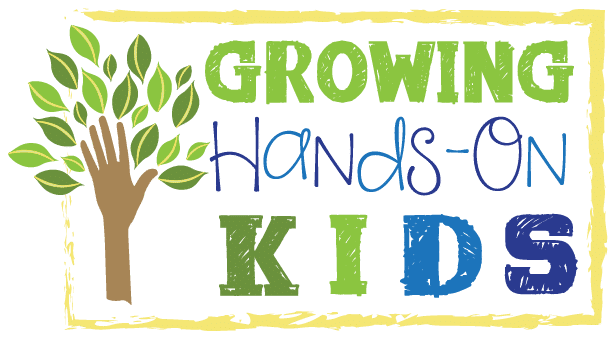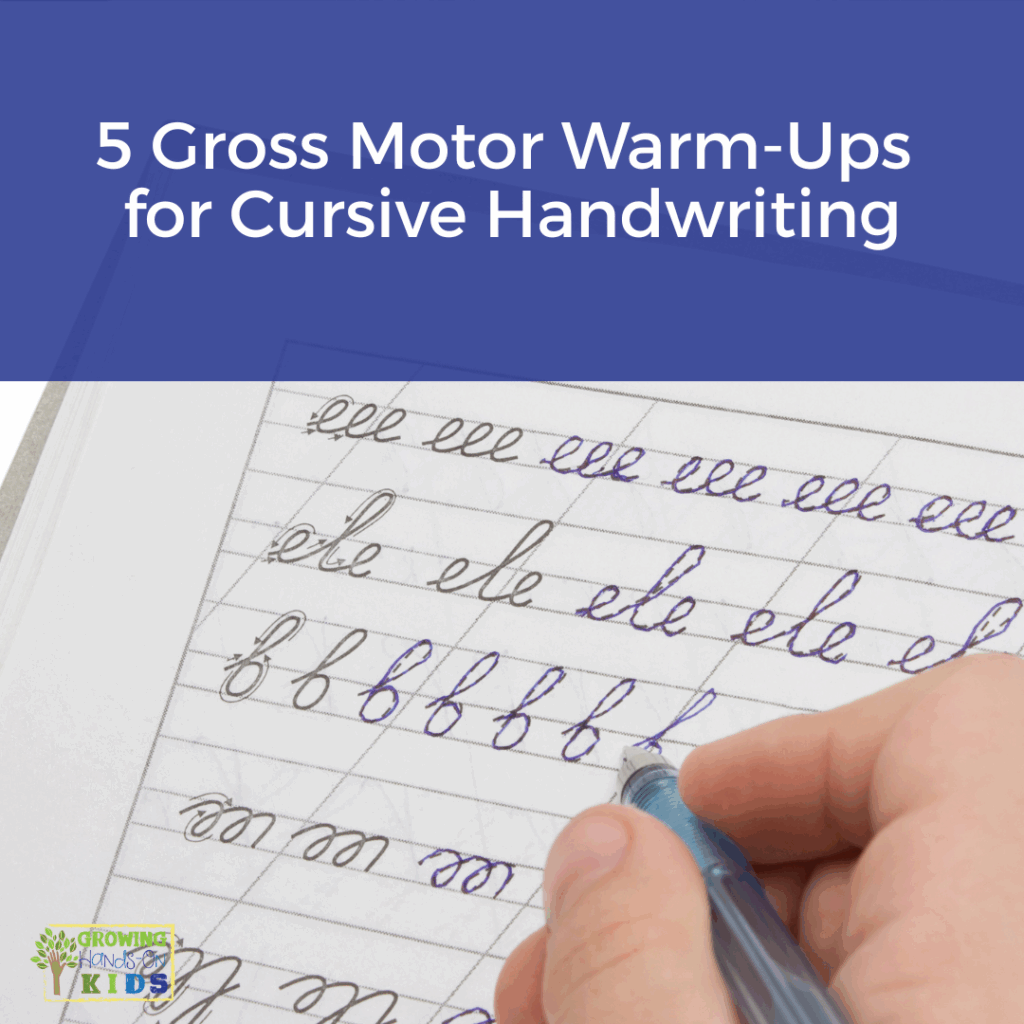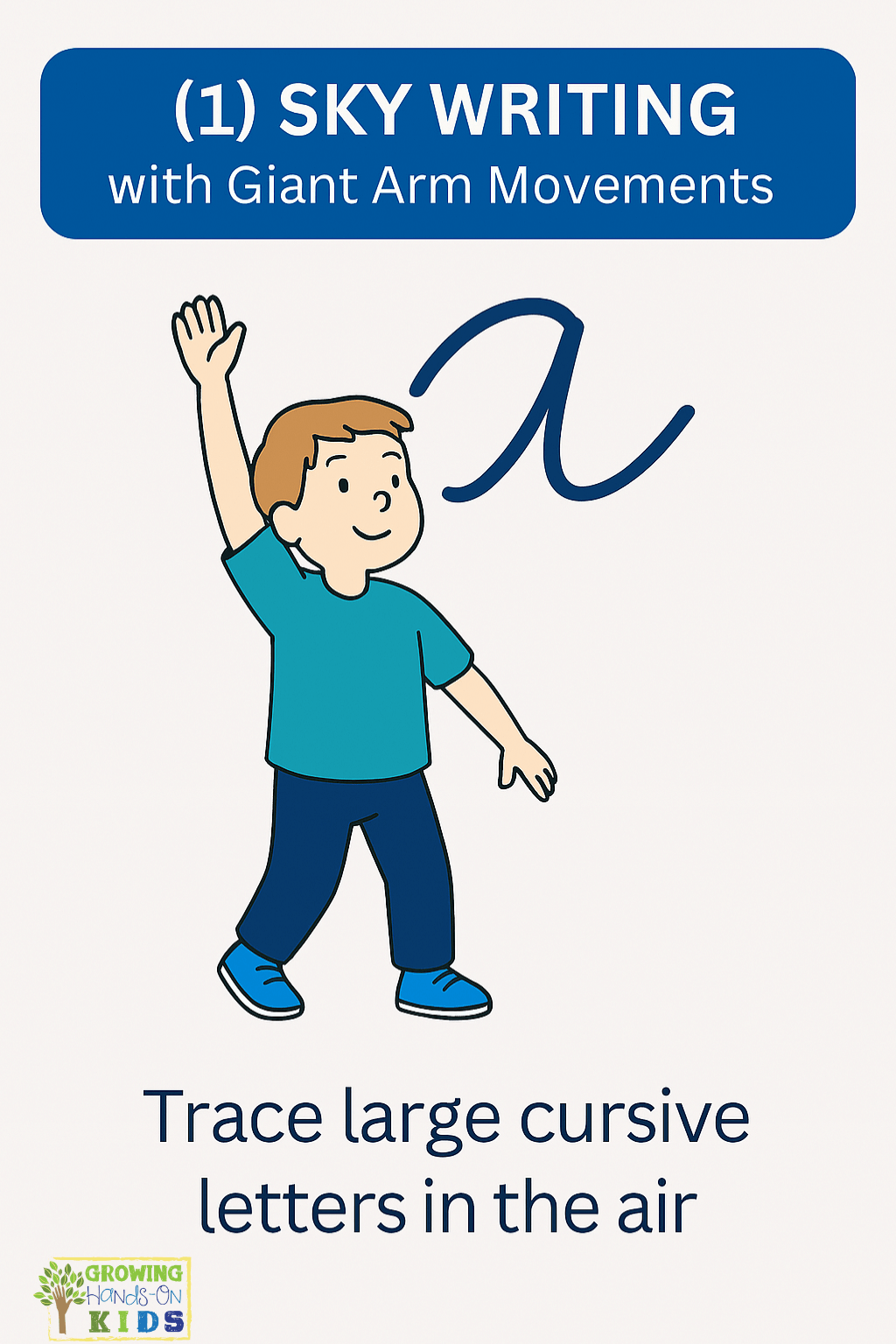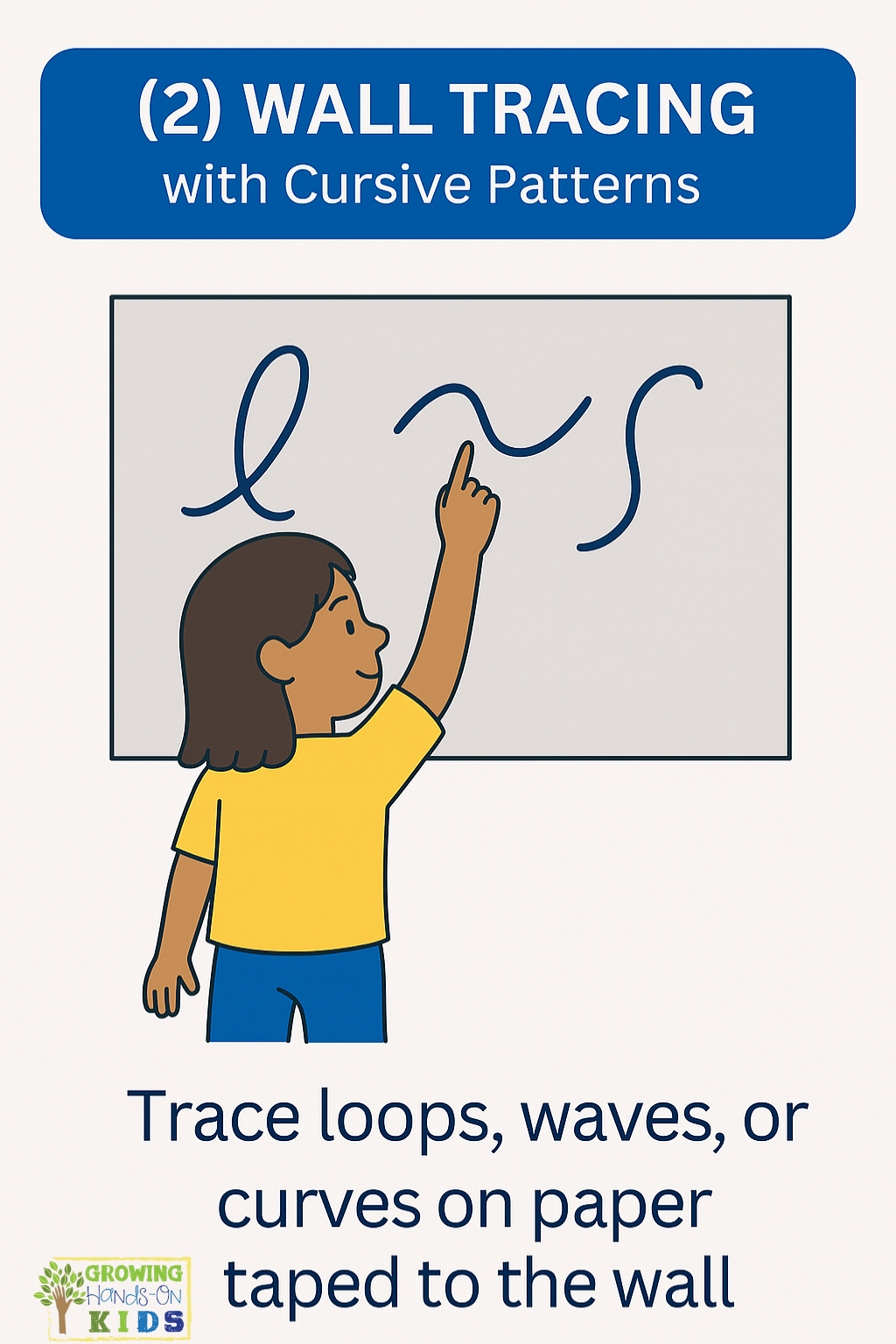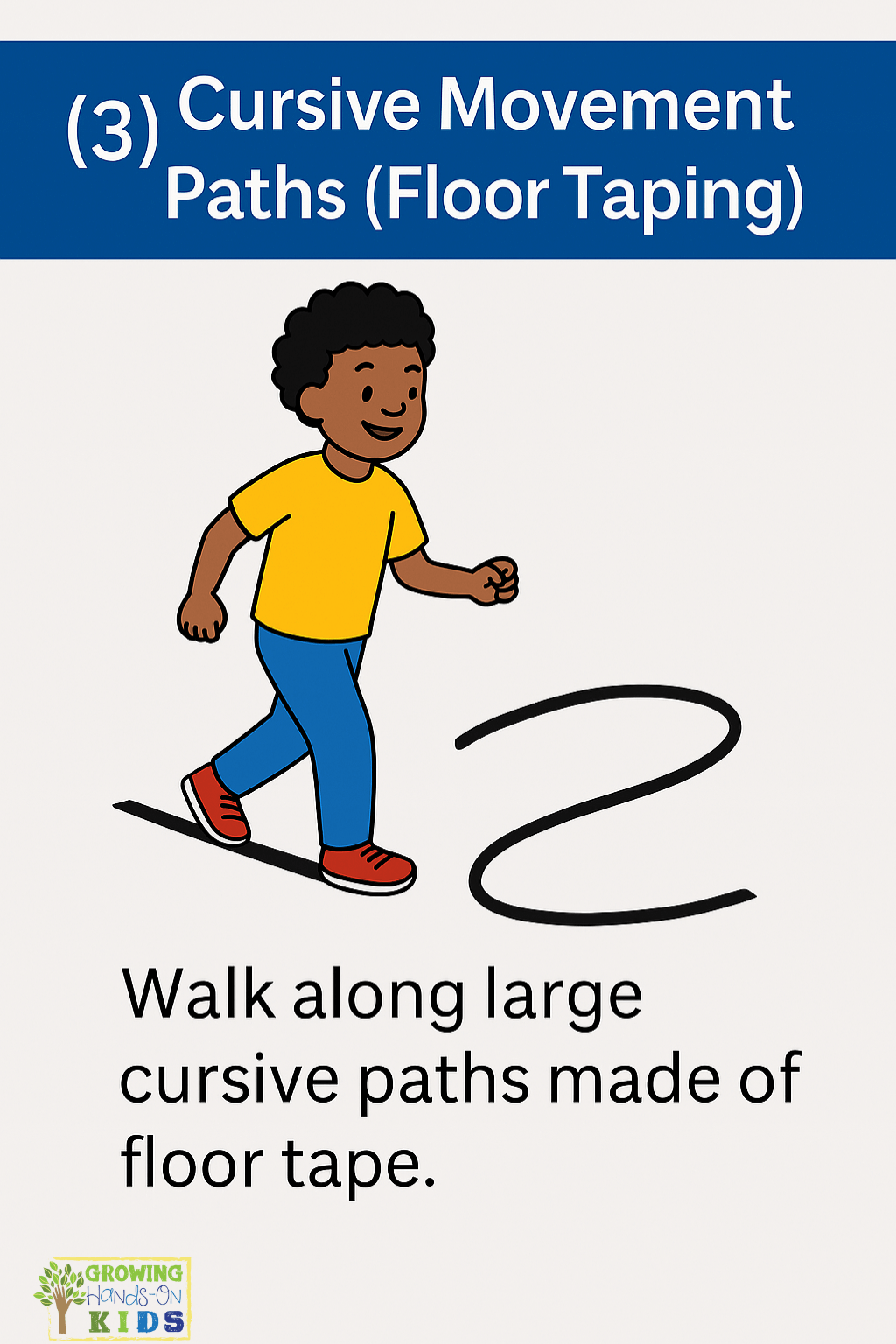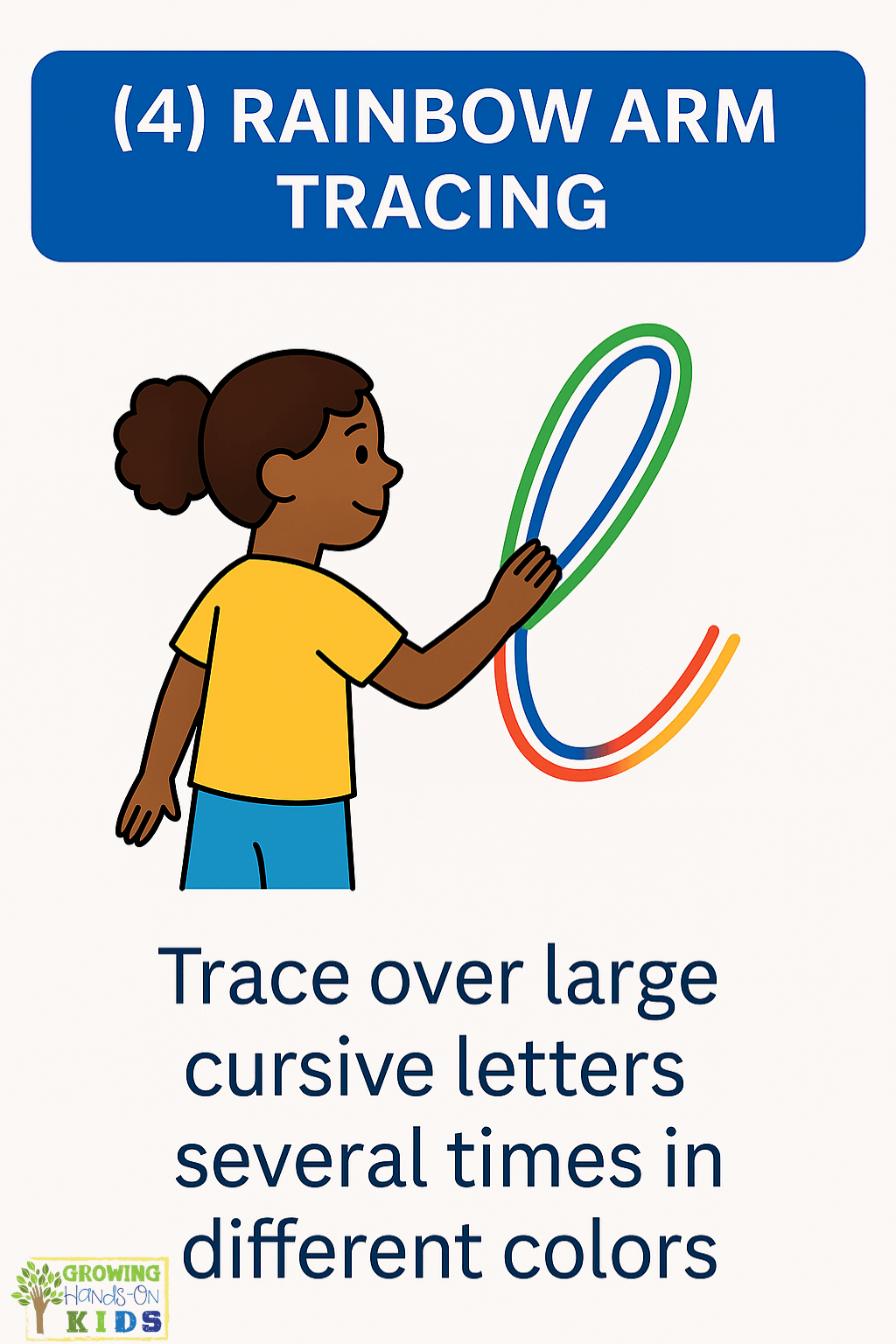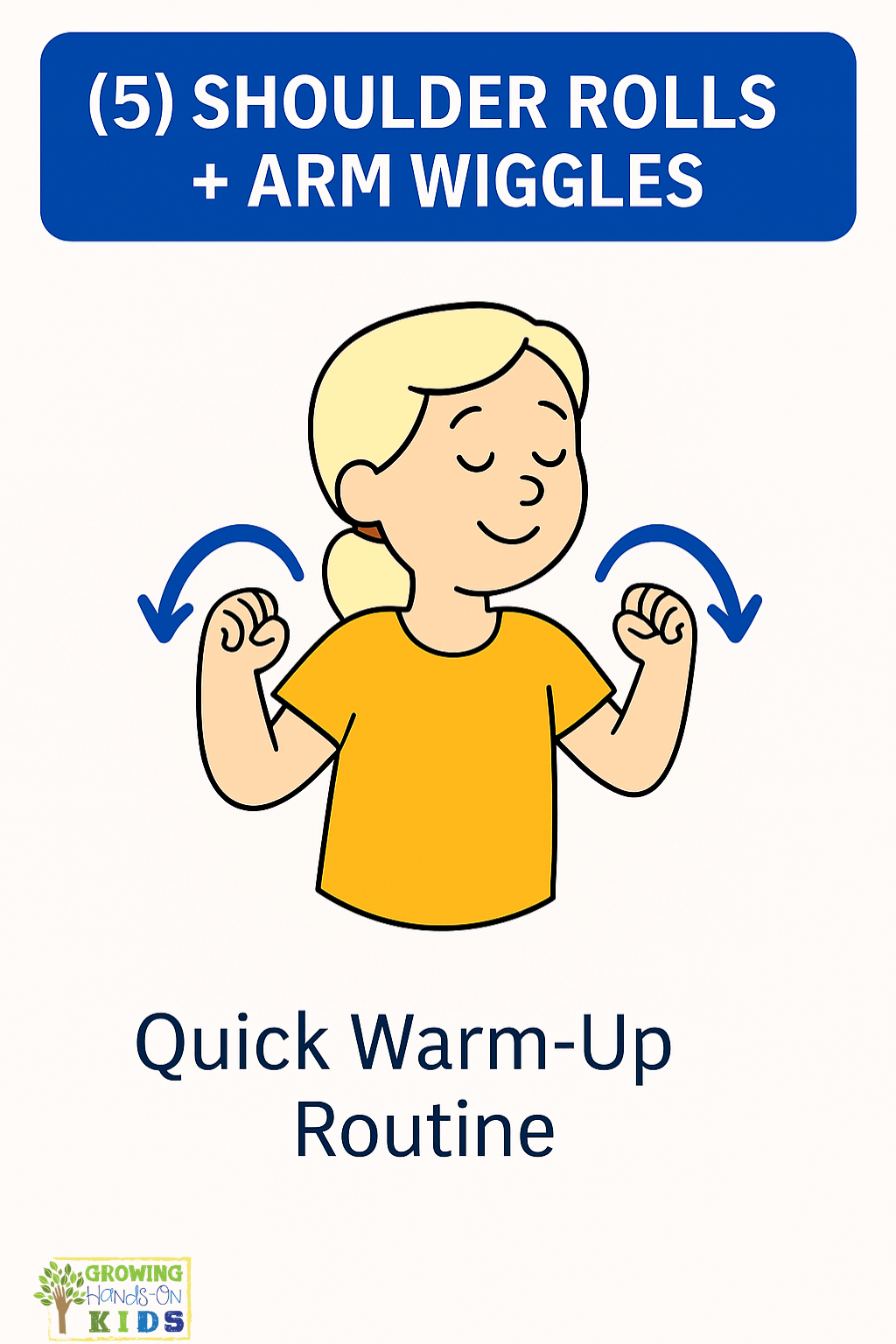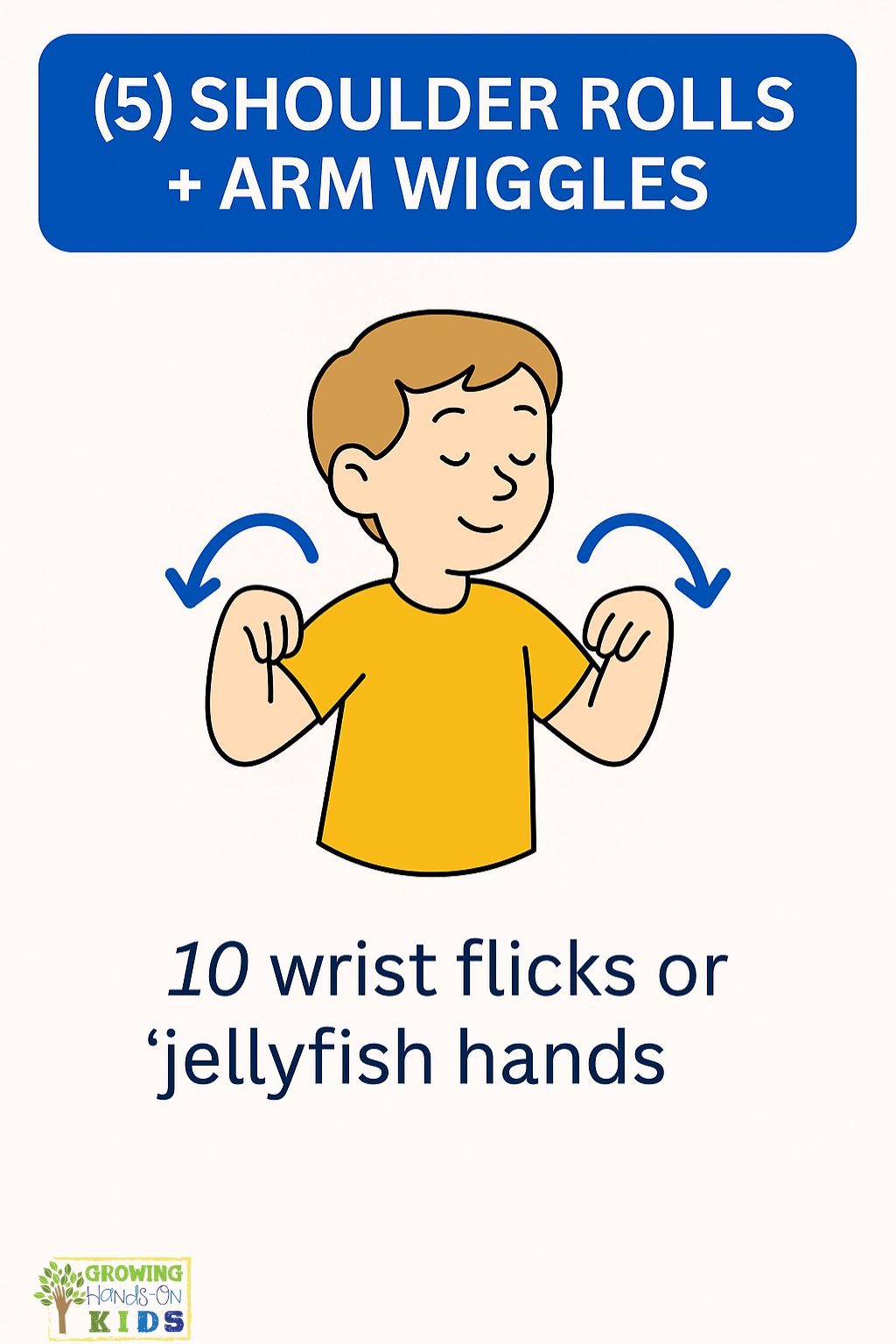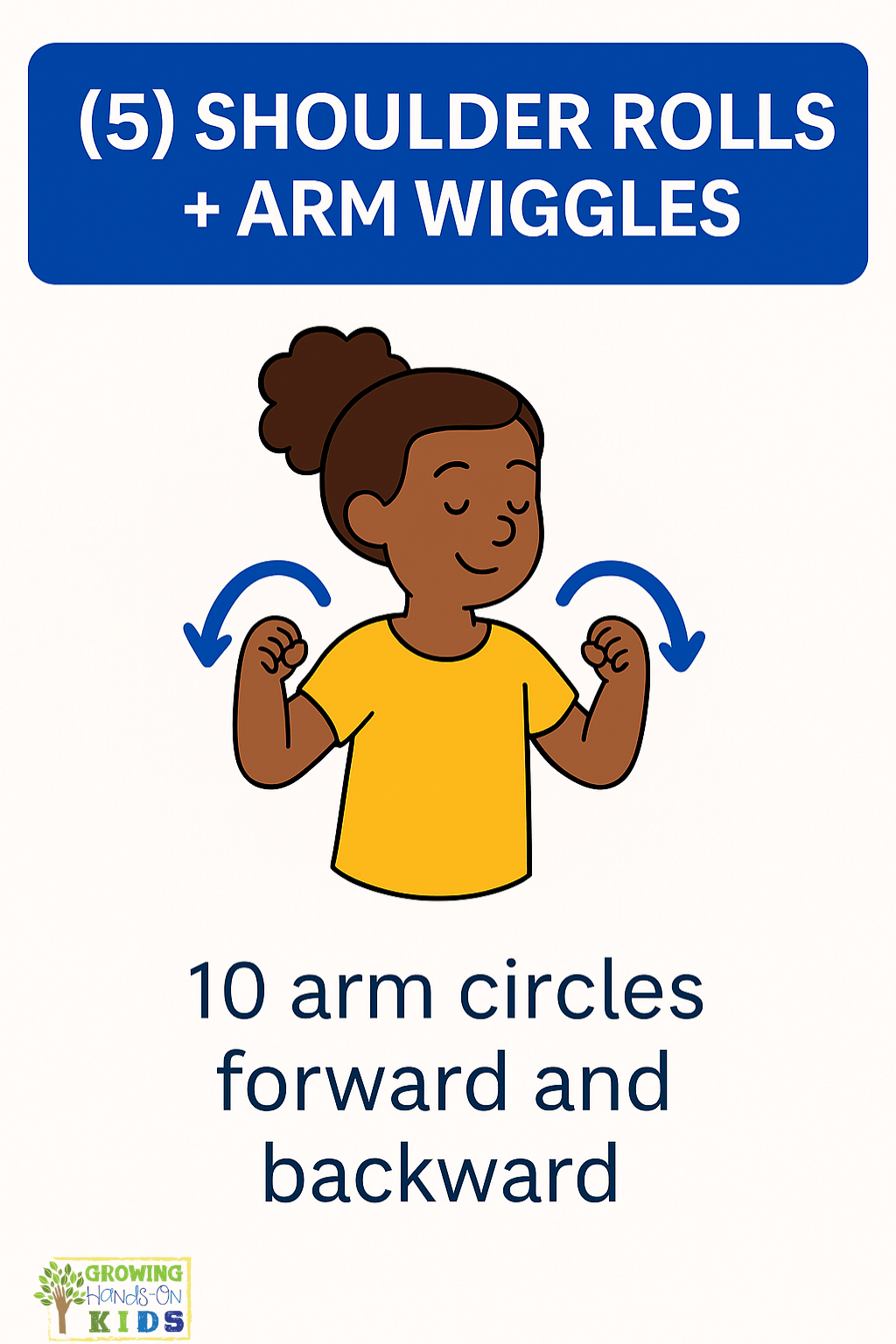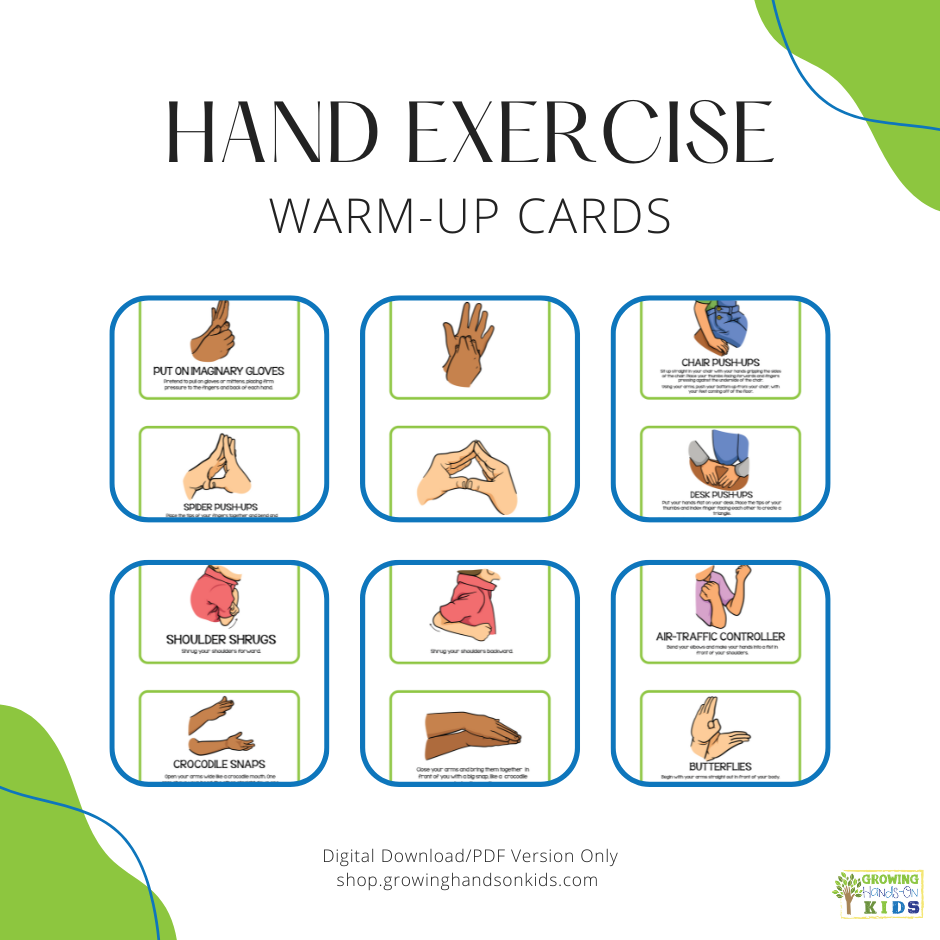5 Gross Motor Warm-Ups for Cursive Handwriting
Affiliate and Referral links are used below to promote products I love and recommend. I receive a commission on any purchases made through these links. Please see my disclosure policy for more details. As an Amazon Associate, I earn from qualifying purchases.
Gross motor warm-ups are a vital foundation for successful handwriting when children are learning to write. Not only do they help build up the muscles that children need for handwriting, but they also help support motor planning and can even build confidence when they do pick up a pencil to write.
Let's take a look at some specific gross motor warm-up activities before learning how to write cursive.
Why Teach Cursive Handwriting?
Cursive is making a comeback in the school environment, and I, for one, am happy about it! My children had cursive handwriting practice built into their school day this past year. My son, in 3rd grade, learned all the letters, plus how to write his name. My daughter, in 6th grade, copied whole sentences and passages in cursive.
Research has shown that learning cursive can be beneficial by enhancing brain development, particularly language retention, memory, and fine motor skills. (The Resurgence of Cursive Handwriting & Why Cursive Handwriting is Good for Your Brain).
Cursive can be a great option, especially for children who may be struggling with print. Print handwriting requires them to pick up the pencil multiple times to form a letter. This requires a lot of muscle memory practice and can be frustrating for some students. Cursive letters are one continuous flow and can be easier for some children who struggle with print letter formations. (Why Cursive Writing Is Still Essential for Student Success).
Some experts believe that cursive handwriting can be a good option for children who struggle with dyslexia or dysgraphia. (The Writing Advantage: Cursive vs. Print)
Cursive Handwriting Warm-Up Activities
Let's look at some specific cursive handwriting warm-up activity ideas.
Sky Writing with Giant Arm Movements
Have children trace large cursive letters in the air using their whole arm. Use both hands at once (mirrored) or one at a time. Say the letter names out loud as they draw them.
This builds shoulder and arm strength while reinforcing letter shapes. Air writing also supports motor planning and visual memory.
Fun twist: Use scarves, ribbon wands, or streamers for extra fun.
Wall Tracing with Cursive Patterns
Tape large paper to the wall and draw loops, waves, or connected curves (just like cursive warm-up lines). Have children trace over them using markers or their fingers.
Vertical surfaces naturally engage the core, shoulders, and wrist extension, perfect prep for seated table work.
Add-On: Turn it into a “path tracing” game with little bugs or animals that need to “crawl” along the loops. Using cars and having a race can also be an option.
Cursive Movement Paths (Floor Taping)
Use painter’s tape to create large cursive patterns or letters on the floor. Children walk, tiptoe, or scooter along the lines while saying the letter sound.
This activity boosts spatial awareness and coordination, both of which are important for forming and connecting cursive letters smoothly.
Challenge: Add speed or direction games (“Now walk the path backwards!”).
Rainbow Arm Tracing
Have children trace over a large wall letter multiple times with different colored markers or chalk, creating a “rainbow” effect.
Repetition helps build the muscle memory needed for cursive. The color changes add visual tracking and a little extra fun.
Try It: Start with simple lowercase letters like “l,” “e,” or “c.”
Shoulder Rolls + Arm Wiggles (Quick Warm-Up Routine)
These 4 ideas are a great way to warm up the muscles for writing. It does not have to be specific to cursive, all handwriting practice can benefit from gross motor warm-ups.
- 10 big shoulder rolls
- 10 arm circles forward and backward
- 10 wrist flicks or “jellyfish hands”
- Shake out both arms like wet noodles
Fun twist: Put on music and turn it into a silly warm-up dance.
Benefits of Gross Motor Warm-Ups for Handwriting
Activate the Core and Postural Muscles
Handwriting doesn’t begin with the hands, it begins with the core. Children need strong postural control to sit upright, stabilize their trunk, and free their arms and hands for fine motor work.
Gross motor activities like arm circles, wall push-ups, or animal walks engage those large muscle groups, improving endurance for writing tasks.
Support Motor Planning and Body Awareness
Gross motor warm-ups help children develop proprioception (knowing where their body is in space) and motor planning (figuring out how to move their body to complete a task).
This is essential for tasks like:
- Aligning letters on a line
- Spacing words evenly
- Controlling pencil pressure
Wake Up the Shoulders, Arms, and Hands
Before fine motor control can happen, children need proximal stability — stability at the shoulder and upper arm — to support distal mobility (refined finger movement).
Gross motor warm-ups like shoulder rolls or rainbow tracing loosen up the upper body, improve joint stability, and can reduce fatigue during writing.
Help Regulate Energy and Focus
Movement prepares the nervous system for learning. Whether a child needs to calm down, wake up, or reorganize their attention, gross motor warm-ups can be adapted:
- Slow, rhythmic movements calm and center
- Quick, bouncy actions alert and engage
- Heavy work like pushing or pulling regulates and grounds
They Build Confidence Through Success
Many children who struggle with handwriting also experience frustration and avoidance.
Gross motor warm-ups are fun, success-oriented, and low-pressure. This helps build momentum and boost confidence before the challenging fine motor work begins.
For more handwriting resources, check out the links below.
Hand Exercise Warm-Up Activity Cards – Instant Download – $10
Looking for an easy way to prep little hands for fine motor and handwriting success? These Hand Exercise Warm-Up Activity Cards are just what you need!
This digital set includes 11 engaging warm-up activities that target the shoulder, arm, and hand muscles—perfect for setting the stage for focused, successful learning.
Free Printable Handout of Gross Motor Exercises
Enter your email address into the box/form below for the free printable.
Subscribe to Growing Hands-On Kids for my weekly newsletter and get a free printable of the shape-breathing exercises.
When you subscribe to my email list, you'll also be the first to know about new printables or products I create and recommend.
If you have already subscribed to GHOK, don't worry, you aren't subscribing again. Entering your email below lets my email service provider know which printable download to send you. You will not receive duplicate emails from me in the future.
You May Also Like:

Heather Greutman, COTA
Heather Greutman is a Certified Occupational Therapy Assistant with experience in school-based OT services for preschool through high school. She uses her background to share child development tips, tools, and strategies for parents, educators, and therapists. She is the author of many ebooks including The Basics of Fine Motor Skills, and Basics of Pre-Writing Skills, and co-author of Sensory Processing Explained: A Handbook for Parents and Educators.
